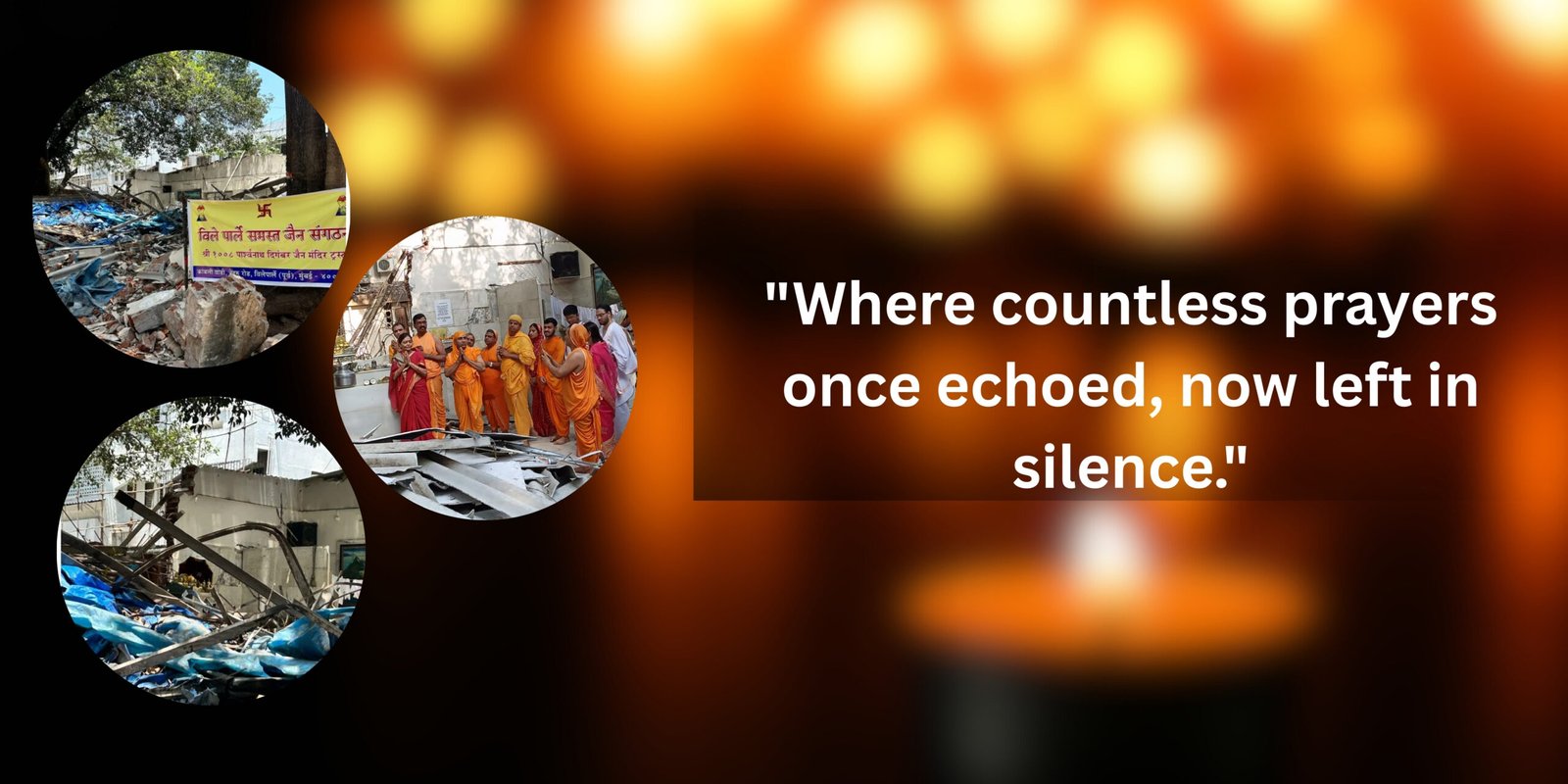A temple stood in Vile Parle — not just with bricks and marble, but with years of quiet prayers and strong values. Recently, it was broken down. The news came suddenly — and it hurt.
But in a time when people shout, burn posters, and block roads to show anger, something surprising happened — or rather, didn’t.
There were no fights. No loud protests. Just silence.
A silence full of pain, but also full of peace.
Because when a community truly follows Ahimsa (non-violence) and Aparigraha (letting go), then reacting with anger is not even an option.
This is not a story of what was lost — but of what was shown.
A way of living the world often forgets.
Jain temple: Why didn’t the community protest like others might have? What can we learn from this?
The community’s decision not to protest loudly wasn’t a sign of weakness — it was a quiet expression of inner strength. Rooted deeply in the philosophy of non-violence, the Jain community believes in responding to pain without causing more pain. When the temple was brought down, they did not react with slogans or outrage, but with prayer meetings and calm unity. This wasn’t inaction — it was conviction. Their response showed that true strength lies in composure, and that faith can be a stronger force than fury. They trusted the legal path and held onto their values, even when hurt. In doing so, they offered a powerful lesson: when you stay calm through chaos, you lead by example.
Mumbai: But is silence helpful when something unfair happens? Isn’t it better to speak up?
Silence is often misunderstood. It’s not always about doing nothing — sometimes, it is a form of resilience. In this situation, the community chose peaceful silence, not as surrender, but as a conscious decision to avoid anger and violence. They did take the proper legal steps, but without turning the streets into battlegrounds. Their quietness was not about fear or submission — it was about discipline. In a world quick to react, they chose reflection. This form of action teaches us that not every response needs to be loud to be powerful. Sometimes, the calmest voices carry the deepest truths.
Vile parle: Other communities react differently. Is one way better than the other?
Each community responds in a way that reflects its own values and beliefs. What makes the Jain response unique is its deep-rooted promise to never harm — not even in anger. The question isn’t about comparing which way is better, but about recognizing what we can learn from each other. The Jain approach shows that peace is not the absence of action, but the presence of principle. While others may choose louder means, this quiet resistance is a reminder that justice can be pursued without losing compassion. It invites us all to reflect: how do we hold onto our values when we’re tested?
Temple: But do Jain values still work in today’s fast world? Isn’t non-violence too soft for today’s problems?
In today’s chaotic world — filled with outrage, stress, and constant noise — Jain values may seem outdated at first glance. But if we look deeper, we find that these teachings are not just relevant — they are essential. The principles of non-violence, contentment, truth, and simplicity help us slow down, think clearly, and live more peacefully. When everything around us demands reaction, Jainism reminds us to respond mindfully. What happened in Vile Parle is proof that such values still guide lives and communities. And maybe, now more than ever, we need these teachings — not just to deal with others, but to find peace within ourselves.
Jain: What can we learn from this — even if we are not Jains?
The biggest takeaway is simple: not every problem needs a loud answer. The Jain community didn’t respond with anger. They paused. They prayed. They stayed together. Their path wasn’t easy — it was harder. But in choosing peace over protest, they made a statement that transcends religion. In our homes, schools, and workplaces, we too can choose calm over conflict. We too can find strength in patience. This isn’t just a Jain story — it’s a human story, a reflection of what becomes possible when we let our values lead us.
In Conclusion: A Question for All of Us
The temple was brought down. But a new question now stands in its place — one that every community, every individual, must answer: When was the last time we answered pain with patience? When did we choose peace over protest?
The world is full of noise and fights. But maybe, it’s time we start listening to the silent strength around us — and within us — because sometimes, the calmest voices carry the most powerful lessons.

